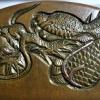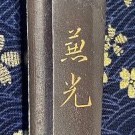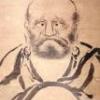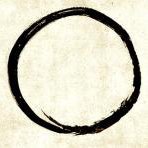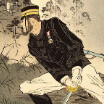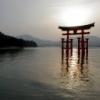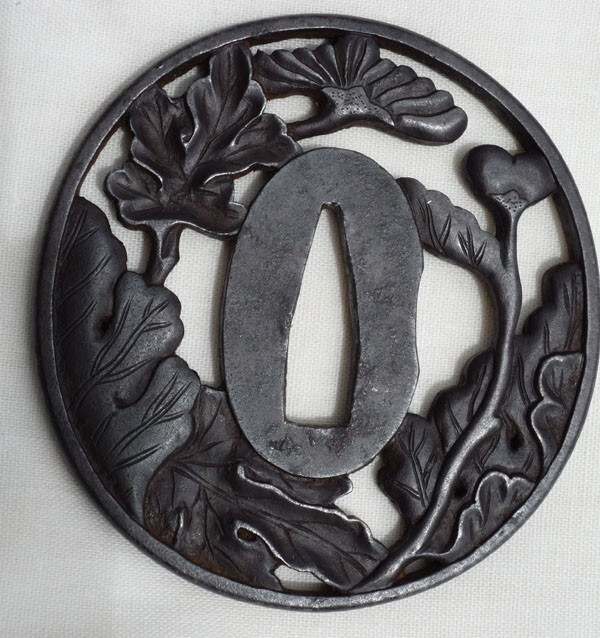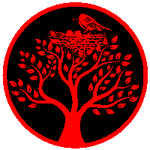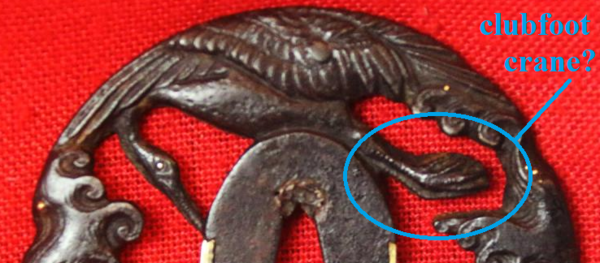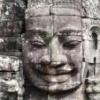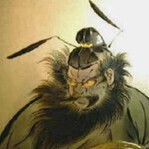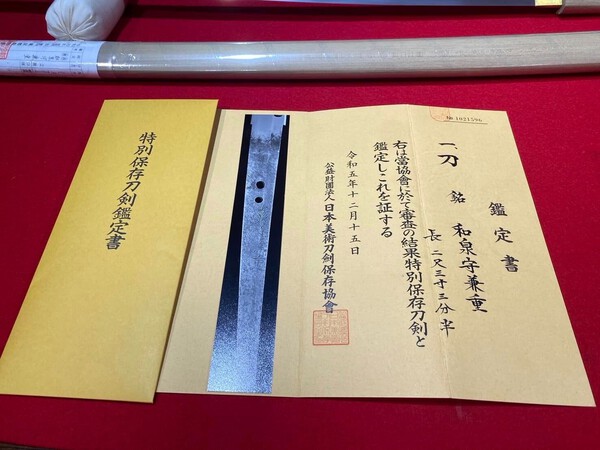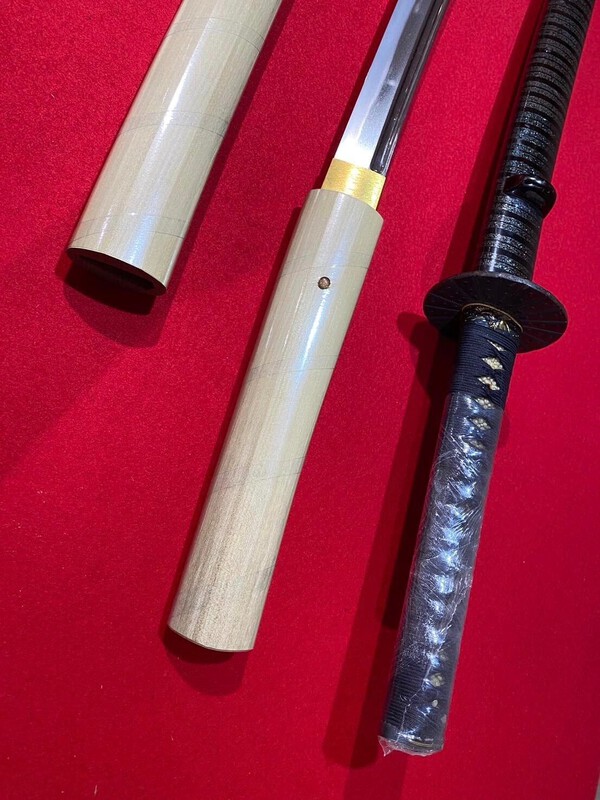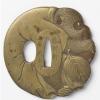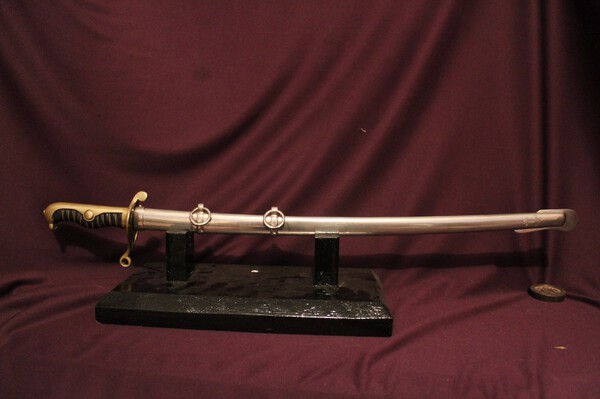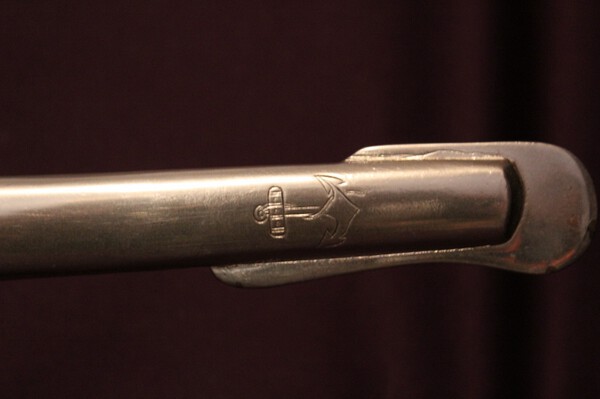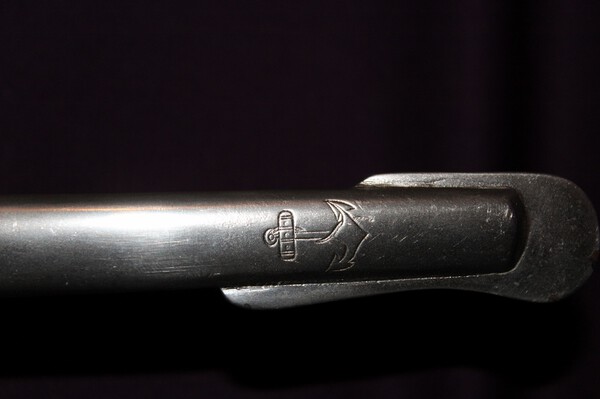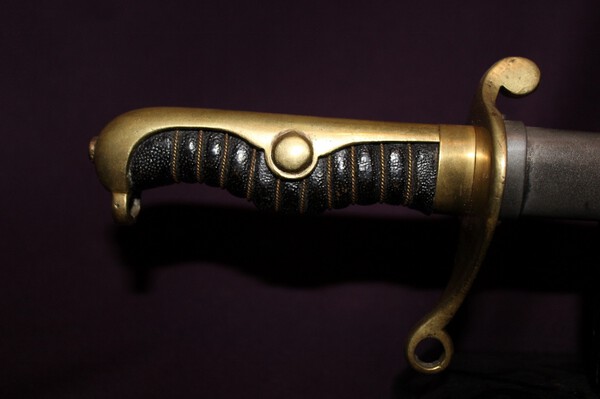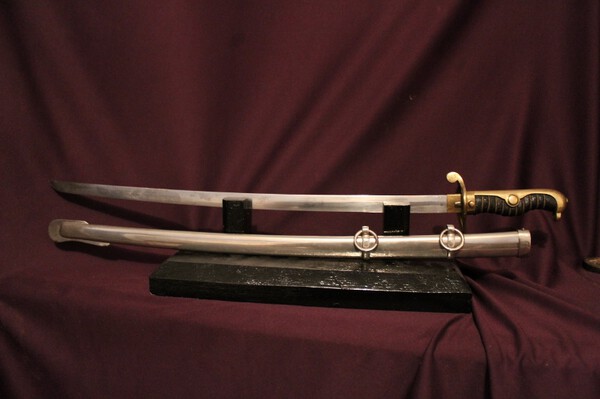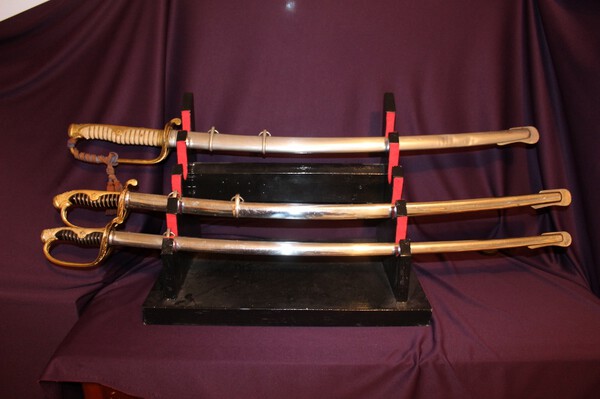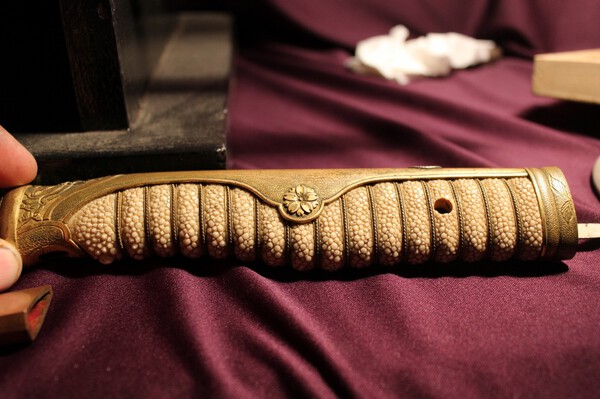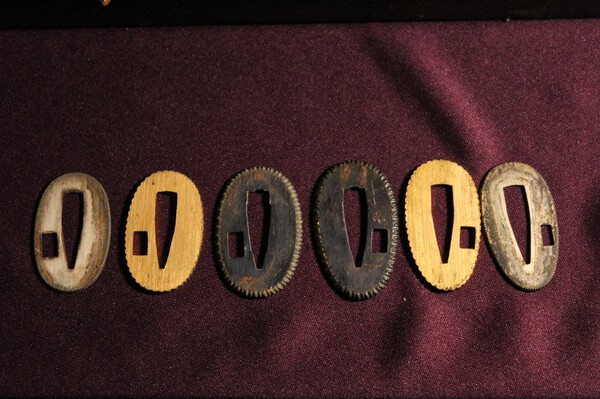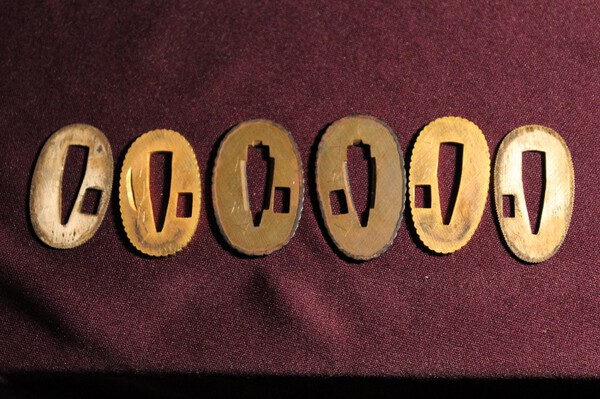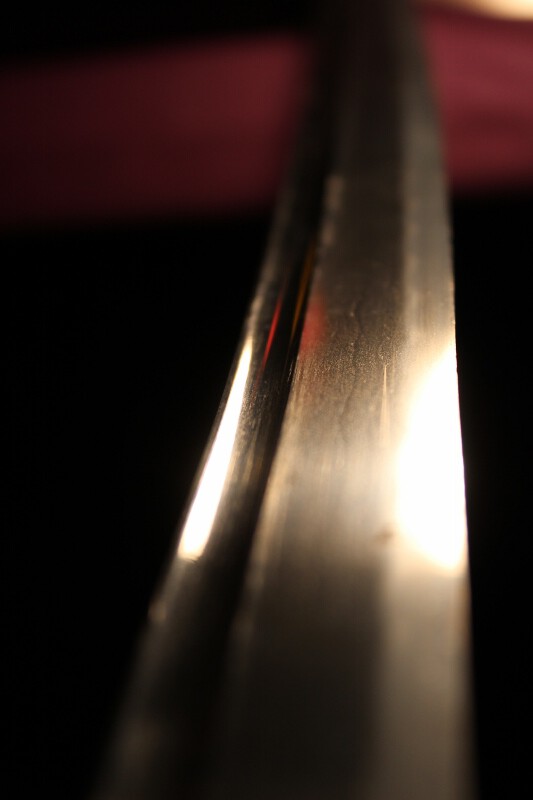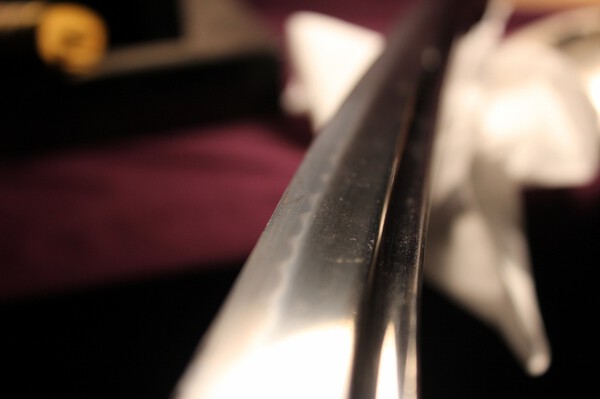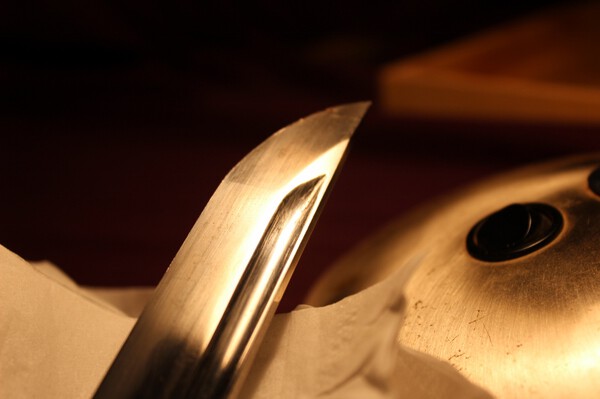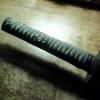Leaderboard
Popular Content
Showing content with the highest reputation on 10/13/2024 in all areas
-
I actually had a USPS person just drop off a daisho at my front door when I wasn't home that was sent via EMS, and faked my "signature" on it. I had to get my neighbor to grab it before anyone took it off my porch.4 points
-
https://www.aoijapan.com/set-of-tosogu:tomei:tsuba-kozuka-fuchi-kashira-menuki-ura-gawara-kurikata-nbthk-juyo-tosogu-65th-millet/ Wonderful set - alas, not for small pockets! Florian4 points
-
Yes, kinzogan-mei were very expensive. If a blade had a Hon'ami kinzogan-mei, especially from an old judge, it was almost certainly the collection of a daimyō (though which family specifically is often lost). And in general you are correct, that kinzogan-mei were only applied to mumei nakago. But there are examples where the Hon'ami applied kinzogan-mei to ubu blades. It is exceptionally rare and all the examples I can think of are from Kōtoku (more on him in a moment). Hon'ami Kōsatsu was in charge of Toyotomi Hideyoshi's sword maintenance. But the appraisal process really seems to have started started with Hon'ami Kōtoku around 1600, which the shōgun granted the Hon'ami family a copper seal to authenticate their origami. This continued through a long and convoluted family structure until the modern day. Old Hon'ami records — kinzogan-mei, origami, etc. — are very, very rarely overturned by the NBTHK. Part of the reason is respect for the old judgements, and part of it is that the old judges had access to original signatures that have long since been lost to us through suriage. Anyways the first five judges are the most important. (The Hon'ami family was around for a long time before this, but this is the important part of the lineage for our discussion here.) 光徳 Kōtoku (1554-1619) has about 10 jūyō, but a mind-blowing 13 jūyō bunkazai 光室 Kōshitsu (1583-1625) and 光温 Kōon (1603-1667) have about 10 jūyō and 2 jūyō bunkazai apiece 光常 Kōjō (1643-1710) has 120 jūyō and 2 jūyō bunkazai 光忠 Kōchū (Hon’ami head 1697-1725) has 200 jūyō and 3 jūyō bunkazai 光勇 Kōyū (1704-1770) has 35 jūyō Kōtoku's judgements are absolutely ironclad. You will almost never see any of his kinzogan-mei on the market, they are priceless. Kōchū and Kōjō are probably #1 and #2 that you will see commercially available, and they are both extremely reputable and legitimate appraisals are almost never overturned. After Kōyū the appraisals start to get weaker... The short version is yes, attributions by later Hon'ami judges are much less reliable than earlier judges. Outright forgery was fairly rare, but inflation of appraisals happened — if you need a Masamune for a gift for the shōgun, but you don't have one or don't want to give yours up, maybe you can pay the Hon'ami fee in advance and get a Shizu re-appraised as a Masamune after "very careful appraisal." Or turn a Naoe Shizu into a Shizu Kaneuji, etc. You do also need to be aware of fake origami. There are quite a few floating around and some of them are very good forgeries. The best ways to tell are a malformed seal stamp on the back, a misshapen kao, or the paper not feeling right. The paper was very tightly controlled and quite consistent, and it has a particular feel to it. The gold (ha) standard reference book on this is Markus Sesko's history of the Hon'ami family, and I would encourage you to buy a copy — it's a great reference.4 points
-
3 points
-
There have been quite a few reports of people using airtags or other GPS tracking systems to lead police on search warrants. https://www.latimes.com/california/story/2024-08-26/apple-airtags-are-helping-cops-catch-thieves-heres-how-you-can-protect-yourself3 points
-
I made the mistake of buying my first sword from there many moons ago, so you can imagine that I have little sympathy for their business model and do whatever I can to deter anyone else from spending money there. With regard to the Japanese stuff, I heard (I think from Peter Yorke who fed them some of his rejects) that most of it came/ comes from bulk buys of low-grade stuff from the art auctions in Japan via an agent. They then tried to match blades with koshirae and sent some blades for an acid polish (a guy called John Bolton used to do them in the UK). The blade I bought was in koshirae that didn't belong to it and the whole thing had a very odd chemical smell to it that (I later reasoned) was due to how it had been "tidied up". Anyhow, you live and learn. I can't imagine that I'm their only dissatisfied customer, but then, if they'd not ripped me and cultivated me as someone new to collecting, they might have made more money from me. That said, they've been around for a long time doing the same thing so a degree of dishonesty clearly pays unfortunately.3 points
-
They've been full of this kind of rubbish since forever. It's always stuff that is short on detail or authentication and long on Samurai fantasy. This does get dangerously close to fraud though so maybe business isn't so good - perhaps they're suffering with import issues too?3 points
-
"Kunzan" is not a Hon'ami, he was Honma Junji-sensei, one of the founders of the NBTHK. He used 薫山, read as Kunzan, as his gō ("artistic name"), which literally means "fragrant mountain." This is a bit of an inside joke — Japanese uses a lot of onomatopoeia, and クンクン kunkun means "to sniff." Honma-sensei supposedly had the habit of sniffing loudly when he was inspecting blades, and one day one of his staff jokingly called him kun-san ("Mister Sniff"), and this was his inspiration for the gō. His successor, Kan'ichi Sato-sensei, used "Kanzan." (I forget the kanji off the top of my head.) Tanobe-sensei, the former head of research at the NBTHK and their student, uses 探⼭, read as Tanzan, which literally means "research mountain." Modern attributions are not really comparable to the old Hon'ami judges. There are strengths and weaknesses of both, a bit like apples and oranges. Honma-sensei's opinions, however, are generally well-regarded. He didn't do very many kinzogan-mei though, I think about ten at jūyō.3 points
-
Update: I checked with the World Renowned leading expert on Type 95s - @Stegel - about this. He says that while we have no documentary or photographic proof, it's his wizened opinion that those blades were pressed or punched out in shape. He owns about 80 of them and their near identical size and shape point to the idea that they were machine punched out in form.3 points
-
Dealers should start using/offering Airtags. The cost is very little and they're extremely accurate. U-Haul started putting them in the cargo vans because theft and re-VINing has gotten out of control and law enforcement simply doesn't have the man power and time to deal with it.3 points
-
3 points
-
Type (Tachi, Katana, Wakizashi, Tanto, Naginata, Other) : Tanto Ubu, Suriage or O-Suriage : Ubu Mei : (Mumei, Signature) : Akamatsu Taro Kanetsugu Papered or not and by whom? : Not Era/Age : Shinsakuto Shirasaya, Koshirae or Bare Blade? : koshirae Nagasa/Blade Length : 32 cm Hamon Type : Kiyomaro Flaws : koiguchi repair Sword Location : United States Will ship to : CONUS Payment Methods Accepted : Price and Currency : $3,000+shipping Other Info and Full Description : Akamatsu Taro Kanetsugu O-Tanto, typical kiyomaro style hamon, silver habaki in modern kosjorae. Slight repair to koiguchi can be seen in photos. Great piece for iai use or collecting of modern smiths. 32 cm nagasa, $3000+shipping. Pm for details2 points
-
2 points
-
2 points
-
I have noticed that they have branched off over recent years, apart from militaria, other stuff like ancient relics, jewelry etc. Some of those write-ups no doubt will raise some eyebrows. As a dealer and descriptions. Wonder if they sell some stuff on commission and just accept descriptions from sellers without doing the research. They are not the only ones that have descriptions that come with lots of questions. Seems to be a tactic for all types of dealers in antique and militaria stuff, though no other comes close, by a long way. The ideal customer needs to be ignorant, and there is no shortage. Its bad though, to sell so confidently with puzzling attributions. Did see an Omori style Fuchi on a sword several years ago and it was far better than this tsuba. Could have been Omori, though it had a fake signature "Teruhide", though it was beautiful and convincing.2 points
-
Yeah, I think a well hidden airtag or similar device is a must have nowadays with any expensive shipment. You can remove the beep noise, and most opportunistic criminals aren't yet looking for them. Wonder how many year it will be before we start seeing airtags as the menuki on swords2 points
-
比総蘓海里長 – (I cannot understand.) 小河原維徳應需造之 – Responding to the order from Ogawara/Ogahara Korenori (reading?), made this. 文政十丁亥年二月日 – Bunsei 10th Hinoto-I year (1827), 2nd month 上杉臣加藤綱俊 – A retainer of Uesugi (clan), Kato Tsunatoshi2 points
-
2 points
-
Well, what is the fuss about ? Before WWII there have been collections of japaneses swords in Berlin. During the war, many houses have been bombed, many swords have been destroyed. So it is no wonder to find such an thing in an cellar filled up with rubble etc. Nobody cared at this time about antqiues. They did have serious problems. Does this Wakizashi has something to do with the gifts presented to the German Emporer by the Japanes, no. Why not take it as what it is. An wakizashi which has been destroyed during the war. All the other is pure speculation and nonsens.2 points
-
@Aegon I understand where you're coming from because I used to have the same idea when I was new to world of Japanese swords. The thrill of testing a sword’s sharpness and putting it to use can be very tempting when you don't fully understand this art. However, the more I studied and learnt, I realized that using old swords isn’t okay, unless you're living in Japan and have no other choice. These swords, crafted by skilled hands in a different time, were passed down through generations, surviving wars, conflicts, and history itself because of the careful and responsible owners that cared for them. When we use an old or antique sword, we unintentionally serve our own desires at the expense of the sword’s lifespan. Each time a blade is sharpened or struck against a target, we diminish its original integrity. In a way, the sword ends up serving our ego, rather than us being humble stewards of its history. By taking care of these swords, rather than using them, we honor the people who crafted and preserved them before us. Their care is the reason we can enjoy these pieces today. I’ve come to appreciate that my role is not be the final destination of the the swords I aquire, but to preserve them so that future generations can experience their beauty and craftsmanship just as we do now. It's not just about ownership, but stewardship and there's something deeply rewarding in that perspective Frankly speaking, with the abundance of affordable reproduction swords available for iaido and tameshigiri it would be plain careless to use anything historical for that purpose. And I wouldn't be proud to tell anyone of it, as it would only highlight my ignorance On another note, I wish you the best of luck with that tsuka and saya project of yours 👍2 points
-
It's amazing how a little 'patina' can get museums so excited, when there are SOOO many examples from the period that are in pristine condition. 'Richly decorated' is stretching it. To spend money on a 'restoration' is a fallacy when the funds could be better spent on some high quality polishes of other blades. I find it hard to imagine what it looked like pre-restoration. Some things are just a lost cause.2 points
-
Hello Frank, You will get more responses if you post this in the Military Swords thread. I see that this paint has age to it, however, this is not the hue of red normally found on period correct pieces. Looks like Bubba painted it in his garage sometime post-war. The traces of red paint on the saya fittings indicate this was not done with care and thus probably not original. See the below link for often encountered period saya colors. Conway http://ohmura-study.net/904.html2 points
-
2 points
-
2 points
-
Hello all link to download the DTI 2024 catalog: https://www.toukenku...logue_20241010-2.pdf enjoy M.1 point
-
@Emil I see where you are coming from and agree. I have seen so many posts where people pick up WWII era pieces--ranging from the most rushed machine made to True nihonto--and have the attitude that they are beaters because they are rather "common," "not old enough," not as expensive or desired as "collector/museam-grade," or don't have famous smiths. There will come a time when the numbers of these dwindle as they age appropriately and they do become sought-after pieces with historical context. I picture this as like a stock chart where the stock chart of nihonto was traditionally high with smiths in high demand and status and then plummeted around Perry's expedition where post-Perry smiths had to have a special dedication and drive, accepting the diminished status and not letting it get to them, to keep the tradition alive amid the tanking of the chart. Maybe someday the chart will take off again if people ever realize gunpowder was not the way and merely increased the brutality and death toll needed to decide the result of a war and then this era would have that special feature of being the lull or depression of the historical flow of things that without it, there would be no future of nihonto. My 2 cents.1 point
-
Who said chiefly? Of course there are many contributing factors, NBTHK papers being one of them1 point
-
1 point
-
The smith is Kunitada. https://www.google.com/search?q="ikeda+Kunitada"&oq="ikeda+Kunitada"+&gs_lcrp=EgZjaHJvbWUyBggAEEUYOTIHCAEQIRiPAjIHCAIQIRiPAtIBCDg3MDVqMWo0qAIOsAIB&client=ms-android-google&sourceid=chrome-mobile&ie=UTF-81 point
-
Was thinking of stating "air tag attached" on last package, i didn't but it was just a thought. Seems a lot of bad news lately with USPS, would a better choice for you guys be UPS?1 point
-
No need to remove anything. It's clearly a tourist trinket from the Philippines. Use it to open letters. Will ruin your keyboard if you use it to open emails.1 point
-
Just curious if there is a similar address on a parallel street where you live? I have had packages delivered to a house with the same house numbers one street over from ours on several occasions. Fortunately, those folks are honest. But I certainly would not put it past a crooked USPS employee either. I would also contact the postal inspector and file a report. John C.1 point
-
Make sure to open a police case. This is the only way these guys will eventually get what they deserve.1 point
-
Hi Dale, I think that the gentleman collector that you refer to as being named adjacent to the back b/w view of the tiger is Donald Stoehr. There are a number of obituary notices for him, if the same person, but I have not seen anything that references a specific interest in Nihonto or fittings. To the best of my knowledge, the tiger pair were split ( under contentious circumstances ) in the early 2000s. It is quite likely that the original and still missing piece ended up with an east European or Russian collector after the Nagel auction. This was getting on for 20 years ago and so it could have changed hands multiple times since then. Images of the Utsushi that Ford made have been freely available on the internet for many years also. Sites like pinterest have shown it for a long time, so it is no wonder the Chinese fakers have picked up on it. Obviously, it was only after the views of the back of the tiger tsuba became known to us that it was possible to compare Ford's Utsushi with the original. The more complicated treatment of the point where the tiger sits was an interpretation of the available information from the front view ie. in that area, almost nothing. I remember having long telephone and Skype conversations with Ford about that area on the piece , and eventually deciding to go with the paws and exposed bamboo framing, all of which were very difficult to blend convincingly. As I am sure you are well aware, there is more background information and commentary to see on the 'A series of fittings' thread - for those who are unaware or would like to revisit, the relevant Item Nos. are 306 and 307. Best Bob1 point
-
If anyone is wondering about the price of the TokuJu Norishige and Yukimitsu, they are 36mil and 38mil Yen respectively. I guess that illustrates the power and influence of NBTHK's papers on the market.1 point
-
I also hate the term “machine made.” It gets carelessly thrown around on places like Reddit when people ask for gunto IDs. IMO the only Japanese WWII blades that can accurately be called “machine made” are Type 95s, zoheito, and possibly the navy stainless blades (I’ve never been able to find good info on how these were actually made). Typical officer showato were “hand” forged to shape from bar stock by smiths using power hammers. Every blade is slightly different, and sayas and fittings do not freely interchange. They’re non-traditional because they aren’t made of tamahagane or orishigane and are oil quenched. Not because they’re not “hand forged”. Gendai smiths used power hammers too. If the use of power hammers makes a sword “machine made,” then most gendaito are “machine made.”1 point
-
His mei history is interesting, now that I look at it. I have 2 blades, now, April 1940 and August 1940 with the "Nyudo" annotation and the first one, April 1940, posted by @Hs132 has a kikusui on the blade! After 1940, he dropped the "Nyudo" and picked up his kokuin. I have 16 of his blades on file, and all but one, after 1940 have the kokuin. Most are Showa stamped, but 5 (no dates) have the large Seki stamp. Hs132, April 1940 with kikusui1 point
-
和泉守兼重 Izumi no kami Kaneshige 特別保存刀剣 Tokubetsu Hozon Izumi no Kami Kaneshige was an influential swordsmith active in the early Edo period and is well-known as the master of Nagasone Kotetsu 長曽祢虎徹. Born in Echizen Province (越前国 、present-day northeastern Fukui Prefecture), he moved to Edo around the beginning of the Kan'ei era (1624–1644) and became a court swordsmith for the Tōdō family in Ise Province (modern Mie Prefecture). There is a legend that he was introduced to the Tōdō family with the help of the famous swordsman Miyamoto Musashi, who was a personal acquaintance of Kaneshige. It is said that the two swords beloved by Musashi were inscribed with the signature "Izumi no Kami Fujiwara Kaneshige," but their current whereabouts are unknown. Regarding the workmanship, Kaneshige's swords typically feature a shallow curvature with straight hamon or gunome-midare patterns. Some blades exhibit a Mino-style undulating wave pattern mixed with pointed shapes. The steel used is characterized by a combination of "koitamehada" (small itame pattern) and "masamehada" (straight grain), showing influences from the style of the first-generation Echizen Yasutsugu. The signatures found on his works include "Izumi no Kami Fujiwara Kaneshige," "Izumi Daijō Fujiwara Kaneshige," and "Kazusa no Suke Kaneshige." Price: 18,900 USD included shipping. NAGASA:70.8cm MOTOHABA:3.1cm MOTOKASANE:7mm SAKIHABA:2.15cm SAKIKASANE:5mm If you want more detail photo . plz PM me ro send Email: kevinkuo0419@gmail.com1 point
-
1 point
-
1 point
-
NBTHK just uses two categories in results. Usually in the Jūyō books, Book 1 is Kotō and Book 2 is all other stuff, swords generalized as Shintō followed by koshirae & fittings. There are currently some items that are made in 1900´s that have passed Jūyō evaluation. Gassan Sadakazu (貞一) has 3 blades 1906, 1906 and 1908. There is an uchigatana koshirae that has a tsuba by Gotō Mitsumasa dated 1905, meaning the package as such cannot be older than that. There is also a daishō tsuba by Hashimoto Isshi dated 1901. I believe only criteria of NBTHK is that they don't judge work of living smiths. I suspect some Tokubetsu Hozon items by quite modern smiths have been sent in for Jūyō but that is purely my speculation. I admit I have spent way too many hours with Jūyō results and some cases I still don't understand why they pass Jūyō. Just seeing the item & description in book does not give total picture, however in Japan I have seen several Jūyō that were not that special to be honest. I have never sent an item to NBTHK and unfortunately I think I might not send even in the future. As HB described above sending a sword internationally seems to be getting extremely stressful lately. Even though I have addiction in sword info and NBTHK Jūyō books are amazing resources, in general I am not a fan of multiple levels of evaluation papers in separate sessions. Of course that is NBTHK proven to work style and it brings money in. I would just personally wish it would be a single session where the sword would be evaluated and given the paper level at the same time. I believe the shinsa staff will remember many items that have been sent in multiple times. Of course that information is not really open to public how many times item X has been sent in etc. As items need to currently be Tokubetsu Hozon for Jūyō submission it would be extremely easy for them to make a file with the Tokubetsu Hozon numbers of the items that have been sent in, so it would be even super fast to check up as I believe they operate with very small time window for each shinsa.1 point
-
My wife freaked out having a suit of armour in the hall, but gradually she came to like it there. Now she feels that it somehow guards the house. Actually it's pretty amazing when you start to realize how many materials were used and what skill was involved to fashion the armour into something functional, not too heavy and not too light, which also looks both good and fearsome. And then you start to discover the endless blend and variety of colour and material to be found extant. Instant time slip. And people sometimes comment on it, and ask questions. In some ways the ultimate decoration, the traditional centrepiece of the house of a bushi.1 point
-
A few things to consider when submitting a sword for Juyo shinsa. Yes, it is a competition (as Darcy said). The sword will be in competition not only with other swords being submitted, it may also be in competition with previous similar swords/examples that have passed. And if the sword being submitted is not better than previous examples that have passed, you may be out of luck even when and if the sword being submitted is an excellent sword. Another thing to be aware of is that a sword's polish matters, and it too is being judged. Old polish or new polish, it must meet their expectations. Also, more than a decade ago I was about to submit a sword for Juyo shinsa when I was tipped off that a stash of Toku Ju swords that had been discovered were being submitted because it was a Toku Ju shinsa year, and it was unlikely that anything else would pass. I wonder how many other swords were submitted that year with absolutely zero chance of passing? Their game, their rules. Entry is voluntary. Which means that when you enter you're agreeing to play by their rules. Best of luck!1 point
-
I think Jussi has the best stats already : Jūyō 42 Swords 1174 (not sure about this) submissions – 115 passes (95 Kotō, 20 Shintō) Jūyō 43 Swords 837 submissions – 144 passes (120 Kotō, 24 Shintō) Jūyō 44 Swords 805 submissions – 147 passes (113 Kotō, 34 Shintō) Jūyō 45 Swords 938 submissions – 155 passes (114 Kotō, 41 Shintō) Jūyō 46 Swords 911 submissions – 200 passes (152 Kotō, 48 Shintō) Jūyō 47 Swords 994 submissions – 189 passes (149 Kotō, 40 Shintō) Jūyō 48 Swords 1011 submissions – 186 passes (140 Kotō, 46 Shintō) Jūyō 49 Swords 1020 submissions – 226 passes (181 Kotō, 45 Shintō) Jūyō 50 Swords 1073 submissions – 185 passes (145 Kotō, 40 Shintō) Jūyō 51 Swords 1106 submissions – 203 passes (164 Kotō, 39 Shintō) Jūyō 52 Swords 1001 submissions – 114 passes (97 Kotō, 17 Shintō) Jūyō 53 Swords 992 submissions – 155 passes (135 Kotō, 20 Shintō) Jūyō 54 Swords 979 submissions – 88 passes (83 Kotō, 5 Shintō) Jūyō 55 Swords 703 submissions – 107 passes (93 Kotō, 14 Shintō) Jūyō 56 Swords 724 submissions – 53 passes (47 Kotō, 6 Shintō) Jūyō 57 Swords 552 submissions – 31 passes (26 Kotō, 9 Shintō) Jūyō 58 Swords 356 submissions – 47 passes (38 Kotō, 9 Shintō) Jūyō 59 Swords 467 submissions – 105 passes (80 Kotō, 25 Shintō) Jūyō 60 Swords ?? submissions – 127 passes (98 Kotō, 29 Shintō) Jūyō 61 Swords 829 submissions – 165 passes (136 Kotō, 29 Shintō) Jūyō 62 Swords 875 submissions – 149 passes (135 Kotō, 14 Shintō) Jūyō 63 Swords 760 submissions – 140 passes (119 Kotō, 21 Shintō) Jūyō 64 Swords 923 submissions – 135 passes (118 Kotō, 17 Shintō)1 point
-
Here are the numbers for 2023 / 69 Juyo Shina: Blades submitted: 828 Blades that passed: 561 point
-
It's all steel/iron from a kanna blade. My work, very possibly my 2nd or 3rd after class with Patrick Hastings.1 point
-
Hello, Here is my homemade koshirae display case. I made it myself and made lots of mistakes (glue stains, scratches, littles damages on wood... I was not used with DIY) but I like it. Glass is very thin UV protective polycarbonate to prevent discoloration by day light (same material as hothouse). there is a sake cup with water inside to maintain humidity. Lighting by led ribbon connected in invisible grooves back of the backboard. That costed me less than 400€ and I could have done cheaper (I took thick plain beech for the backboard). Blades are in shirasaya and cotton bag in the white furniture below. It that is made of paulownia, to maintain dryness (pure luck that I had this paulownia chest of drawers before my interest for nihonto). But the drawers are a bit short, I'm thinking to make a katanahako in paulownia like one I saw on Jauce, maybe adding a locking system. Kakejiku are changed according to the season. The bokken is there for it emotionnal value : cheap, twisted and 20 years old but that's my first one.1 point
-
1 point
-
1 point
-
What you can't see in my pictures, because I take great pains to conceal them, are the white cotton handkerchiefs folded up and upon which the steel is actually resting. Nothing shall stain my blades except the blood of my enemy, sir!1 point
This leaderboard is set to Johannesburg/GMT+02:00


